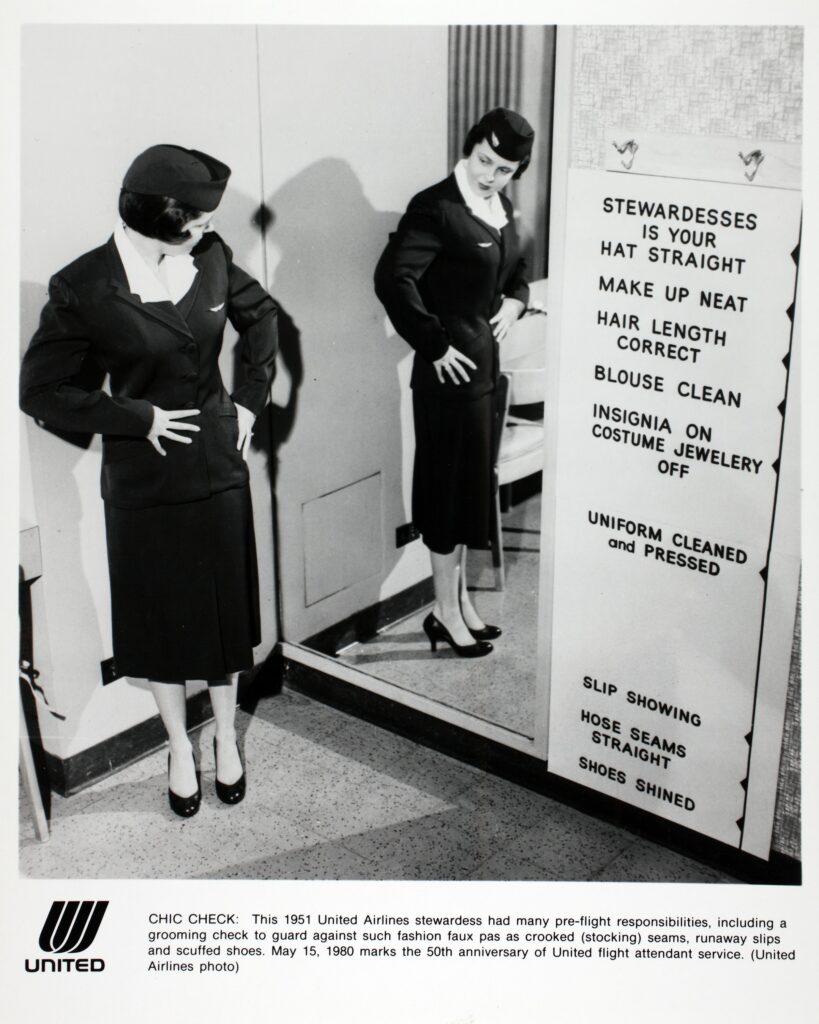Singapore Girl, You’re a Great Way to Fly – But Are You Outdated?

“Singapore Girl, you care for me as only you know how…”
The Early Days of Advertisement
As airline advertising goes, the Singapore Airlines advertisements of the 1980s and 1990s certainly stood out. With a soft-focus that would make your high-school drama teacher proud, breathy voiceovers, terrible jingles, and plenty of ‘Singapore Girls’ serving tea, it appears they were developed for an overwhelmingly male demographic – or at least one that saw the appeal of the exotic women of the Far East. One of the earliest Singapore Airline ads I could find focuses, unsurprisingly, on the beautiful, young and attractive flight attendants on offer by the airline. While more recent advertisements remove the tacky lyrics and focus more around service than sensuality, there is no denying that the Singapore Girl is a central focus of Singapore Airlines branding.
Let’s set the record straight – Singapore Airlines is by no means the only airline that has been questioned over sexism or the overt use of female mystique in advertising. At the management level, the aviation industry has long been dominated by men, and that is unlikely to change anytime soon. In 2014, only 5% of airline CEOs were women. At the end of 2017, 5% of pilots worldwide were woman. In 2018, the CEO of Qatar Airways (when questioned on the low number of women in Middle Eastern airlines at management level) stated that he had many women working in his organization, but that “Of course, it has to be led by a man, because it is a very challenging position.” You might recall that Qatar Airways hit the headlines for its treatment of flight attendants in 2015, both male and female.
Airline advertising, in particular, has always been notoriously dicey. Remember Cheryl, who was the face of National Airline’s ‘Fly Me’ campaign? Featuring just a hint of racism alongside its sexism are the 1980s series of British Caledonian advertisements, with unfortunate middle-aged British men singing about the attractiveness of various airline attendants. Airline advertisements have, historically, been rather notorious for focusing on the beauty of their flight attendants, and these have often been very successful. For the largest part, the sexualization of female cabin crew has been written off as being representative of a different, more glamorous era of airline travel. It’s easier to just pretend that we aren’t still seeing blatantly sexist ads, like these examples from 2012 and 2016 (both from low-cost carriers). Air New Zealand, who constantly seems to be winning accolades for its great service and product, came under fire for using swimsuit models in its safety video just a few years back. Again though, let’s be fair. Aviation is certainly not the only industry to sexualize women in advertising.
Women in the Aviation Industry
Of greater importance is that 5% figure I mentioned earlier, the number of female pilots operating at commercial carriers at the end of 2017? When you break down the Asian region, things are even worse. At the end of 2017, just 0.36% of Singapore Airlines’ pilots are female. The only airlines, worldwide, with a lower rate of female pilots were S. F. Express (China), China Southern, Aeroflot, El Air and Qatar Airways. While there are probably a range of cultural and societal factors that have not encouraged women to become pilots in Singapore, there is one particularly glaring reason that Singapore Airline’s 2017 female pilot figure was so low. It was not until 2016 that the airline started to actually hire female pilots, with the local Singaporean newspaper – The Straits Times – questioning whether it was one of the last airlines in the world to hire women.
The sexism in advertising I referred to earlier is not exactly a new phenomenon. The female flight attendant of the 1970s was highly sexualized. While it still has its challenges, working conditions certainly seem to have improved for most flight attendants compared to their earlier counterparts. In addition, I can’t recall any modern airlines expecting their flight attendants to run an in-flight fashion show, stripping as the flight progresses (an advertising scheme thought up by a woman, by the way). I suspect that a number of airlines expect their staff to follow a similar pre-flight appearance checklist, but they’ll argue it’s simply part of their branding. While Azerbaijan airlines explicitly require applicants to be ‘good looking’ and prospective Malindo Air flight attendants have, in recent years, been requested to strip to their underwear in job interviews, I’d like to think most airlines are slightly more progressive than their historic equivalents.

However, Singapore Airlines seems to have been called out for holding on to the Singapore Girl concept. The reason for this isn’t entirely clear. Singapore Airlines are certainly not the only airline that seeks specific ‘types’ of women to hire as flight attendants, or requires specific grooming requirements (although issuing hairstyles and makeup color palettes for particular staffing levels is a little extreme). Potentially, it’s the lack of diversity amongst its cabin crew that makes it stand out (hiring mainly Asian staff), but even this isn’t unique to the airline. Whatever the reason, and despite many accolades over marketing excellence, the appropriateness of using a female, subservient Asian stereotype as a marketing strategy has been repeatedly called into question.
Using ‘Feminine Identity’ as a Marketing Tool
Interestingly, one of the most obvious examples of advertising based around this stereotype is actually from Cathay Pacific, from 2011. Stating that ‘I just like to listen more than talk’, it features a former model, now ready to attend to your every whim whilst you fly Cathay. I’m certainly not aware of any similar advertisements being run by Singapore Airlines, who at least seem to be a little more subtle in their embracing of the stereotype.
And this isn’t just something that’s been described in the media, although it has been discussed multiple times over the years. As early as 2000, academics were identifying that, while the Singapore Girl offered a considerable value as a marketing tool, a required shift in approach was required, due to changing societal values around female empowerment. Batey Ads, the agency behind the ‘Singapore Girl: You’re a Great Way to Fly’ slogan, was famously dropped in 2007 in favor of TBWA. From 2014, the airline has focused its marketing on innovative technologies, such as in-flight metric and preference tracking, and less on its cabin crew. However, it’s still obvious that a certain amount of Asian feminity is interwoven in its advertising campaigns. How often do you see male flight attendant on a Singapore Airlines advertisement, when apparently half of the cabin crew are male? The idea of feminine identity as a marketing tool remains controversial, not least in a country it’s claimed that great bounds have been made in gender equality, but where 66% of women claim to have been unfairly treated at work.
There are practical reasons for sticking with the Singapore Girl, too, beyond brand loyalty and tradition. Singapore Airlines have had pretty much the same uniform for 50 years. Let’s think about that for a minute. It is not unusual for airlines to have a uniform refresh every ten years, and sometimes, it can happen more frequently. The amount of brand recognition that is built into the kebaya – the simple, elegant sarong dress worn by Singapore Airlines flight attendants – is massive. At a simplistic level, it’s no wonder that Singapore Airlines wishes to hold onto the concept of the Singapore Girl, once you consider the amount of money they have saved on uniform refreshes.

(Singapore Airlines)
Most crucially, though, the voice missing is from the actual women that act as the Singapore Girl, or the general female population of Singapore. I am not speaking for them, and nor do I wish to. I’m not Singaporean. I don’t work for Singapore Airlines. There is a multitude of articles that explain the opinions of many on the Singapore Girl, but attitudes from those most central to the situation seem to be few, and far between. Some retired Singapore Airlines cabin crew have noted the national pride they felt wearing the traditional uniform, and being recognized as representing such an iconic character. Others speak of a rather unpleasant work environment but show no particular concern over their part in the Singapore Girl concept.
One thing is for certain – questions over the appropriateness of the Singapore Girl will continue to be a point of contention. Whether you recognize the historic appeal and significance of the Singapore Girl branding, or if you think it’s an outdated or sexist concept, you won’t struggle to find someone that agrees – and vehemently disagrees – with your opinion.
The Modern Singapore Girl
I’m flying Singapore Airlines in a few weeks, and I’ll be interested to see how the brand is represented to your average economy class passenger. As a result of my last flying experience, my lasting memory of the Singapore Girl is a little bit different than the image the airline is likely wishing to portray.
When my flight landed, a number of passengers in the economy cabin stood up. The flight attendants, which had been cleared to unbuckle their restraints, entered the cabin. A well-groomed, slight Singapore Girl hopped up, gently glided into the cabin, and proceeded to slam down the overhead locker onto the knuckles of a very large, very rude passenger who had climbed out of his seat before it had been deemed safe, in a rush to grab his things. He slunk back into his seat like a child who had just been scolded.
While this was undoubtedly not the sort of behavior becoming of the average Singapore Girl, I couldn’t have been more proud of that flight attendant, who – at that moment – was certainly not the diminutive Singaporean stereotype that she was, perhaps, expected to be.
[Featured Image: YouTube/ Singapore Airlines]























Why pick on singapore? oh right, you can't write about how the middle east treats it's women. Kind of hypocritical since you live in the ME and stays quiet about them. It was my mistake reading your blog, a total waste of time. How convenient that you try to compare singapore airlines to other airlines using visuals from the 50's and 60's.
Great point Belinda! I'll immediately cancel my upcoming 6 paid flights in F with SQ, now that I know that SQ Girls are outdated. Thank you for enlightening us... UA "Girls", here I come!
I agree with Belinda. As a man that is gay I would love to see my demographic catered too. Some of the SA male flight attendants are HOT and would look great in ads. Especially, if they changed the uniforms for the males into Go-Go boy shorts.
When everything is an outrage, nothing is an outrage.
To be honest, this blog post shouldn't exist and you should just log out Belinda because if you don't know the reason for SIA's "lack of diversity amongst its cabin crew that makes it stand out (hiring mainly Asian staff)" then you are not qualified to blog here. In case you haven't figured it out: It is Asia and obviously the pool of applicants are Asian.